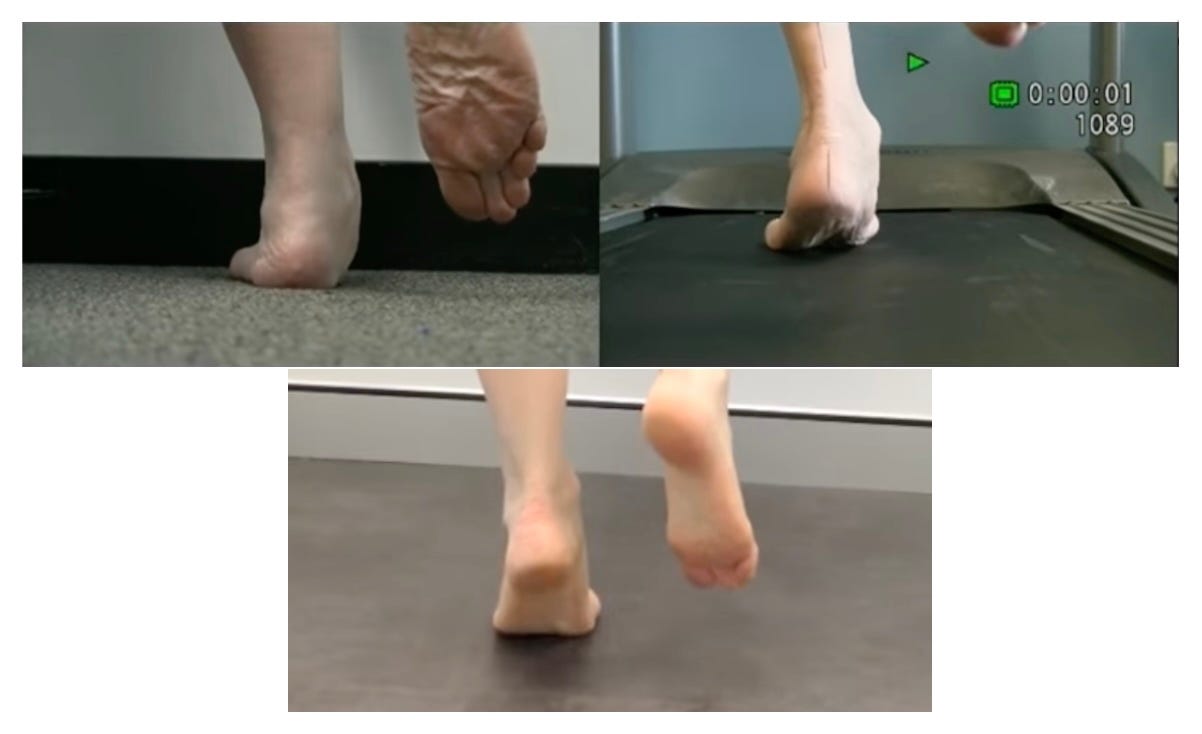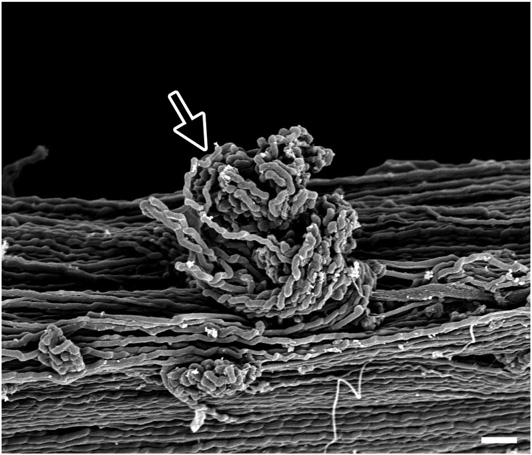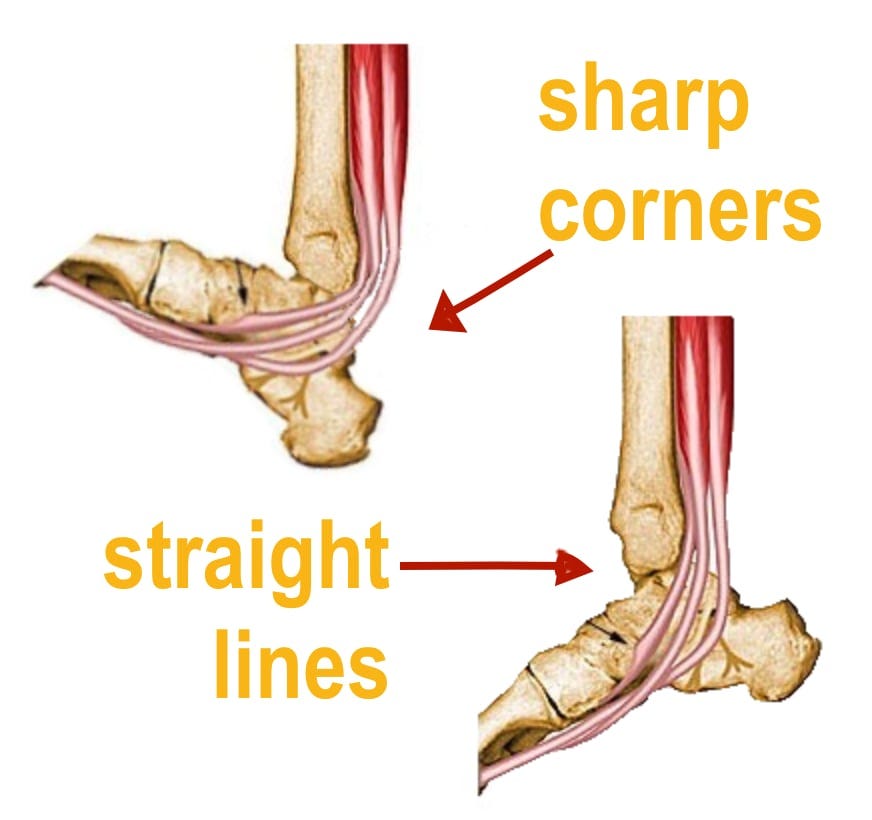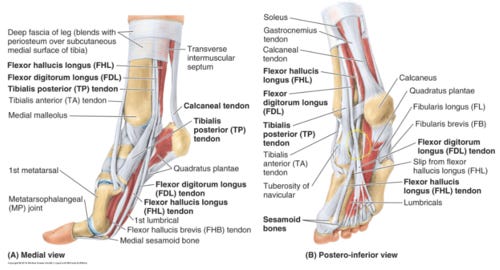#2 Single stance heel raise
Exercise no 2 in the Btpilates Base workout: seven benefits, so do it daily!
I used to have a weak and painful ankle and there was tendonitis too. It was stopping me running and hiking, so I did this every day for two years.
Just do it! - It works!
Contents
About the exercise
Video (4 minutes)
The toe off during walking and running: use it or lose it
Seven great benefits
For best results…
Cautions and modifications…
Discussion: the BT Pilates principles of healing applied to the single stance heel raise
Video (4 minutes)
About the exercise
This exercise is the second in the Btpilates base workout. The exercise is easy, convenient, and has multiple healing benefits. It’s so therapeutic that you should do it every day!
Unlike the first exercise, which was at a low to medium load with a high range of movement (a mobilisation exercise), this exercise is medium to high load, with no movement (an isometric strength exercise).
The toe off during walking and running: use it or lose it
For any movement pattern (e.g., the toe-off that is practised in this exercise), you must use it or you will lose it! The pictures below are a case in point.
Pictures of foot and ankle damage with ageing
Top left: the ankle is so weak and with such a degree of deformity and lost alignment that it can no longer lift off the ground in a single stance.
Top right: the ankle is also deformed and weak but can still lift (this person would benefit by starting a static heel raise on both legs together, and after 6 months, progressing to putting more weight on the affected side (2 minutes daily).
Neither of the top pictured ankles are stable or comfortable to walk on, and we can expect a bone-shattering trip and fall at any moment - such is the problem of growing old without maintaining your youthful movement patterns!
Bottom picture: shows an athletic foot that gives free and confident movement. If only the people in the top two pictures had done lifelong daily heel raises - it’s really not difficult to make it a daily habit!
7 great benefits of single stance heel raise
The benefits detailed below include:
1. Heals Achilles tendinopathy
2. Heals posterior tibial tendinopathy and extensor hallucis longus tendinopathy
3. Stabilises a weak and constantly twisting ankle
4. Strengthens and conditions calf muscles
5. Aids treating plantar fasciitis and foot arch support
6. Strengthens muscles around arthritic joints in a joint-safe way
7. Easy to teach, easy to learn, easy to do
Benefit 1. Heals Achilles Tendinopathy.
The slow loading of the single-leg stance heel raise squeezes fluid out of the swollen areas in the tendon. This permits undamaged collagen fibres to come closer together to reconnect with their neighbours (end-to-end joining and proteoglycan bridges - see pictures). Thus, the single-leg stance heel raise leads to a slow but predictable healing of Achilles Tendinopathy without risking tendon overload that might lead to more tendon tearing, pain and eventually total failure. (See pictures below…)
The tendon damage problem
Picture 1: Micrograph of mechanically damaged collagen fibres in a tendon. Inflammation quickly digests damaged collagen tangles away but also causes fluid accumulation and swelling, which ruptures the cross-links and weakens the overall tendon to the point that it may rupture and need surgical repair.
Picture 2: Many cross-links are required to maintain and support a strong tendon. The cross-links become especially important when the tendon is partially ruptured.
The tendon repair solution
By regularly loading the tendon we can squeeze out the inflammatory fluid and bring collagen fibres together, which permits them to join end to end and form cross-bridging and other structural repairs. The single-stance heel raise is a simple, do-anywhere exercise that makes it possible to provide the required healing stimulus.
Benefit 2. Heals posterior tibial tendinopathy and extensor hallucis longus tendinopathy
Sustained loading via the heel raise doesn’t just heal the Achilles - it heals other tendons as well. Also, since lifting the heel straightens these tendons they can be loaded in a straight line, which cause the least possible damage while the healing stimulus is applied (Tendons damage easily when you load them and drag them around sharp corners -see picture).
Picture: Tendons loaded in a straight line and with no movement receive a strong healing stimulus without the downside of rubbing and damage that goes with being pulled around sharp corners.
Benefit 3. Stabilises a weak and constantly twisting ankle
In a single-leg stance with heel rise, the side stable muscles co-contract to stabilise the ankle and prevent it from wobbling side to side. This exercise has worked very well for my constantly twisting ankle, and a similar exercise (multiple single-leg heel lifts) has also worked well for professional Irish dancers, who have the lowest twisted ankle rates among all professional dancers.
Benefit 4. Strengthens and conditions calf muscles
Strong and in-condition calf muscles are like the springs and shock absorbers of a high-end car! – This results in better cushioning, less jarring, and thus less damage to knees and spines.
Benefit 5. strengthens foot arch muscles and helps de-load the plantar fasciitis
After 30 seconds of heel lift, the calf muscles tire, and you begin to look for other muscles to help the heel stay lifted. The other muscles are the foot arch muscles and the toe flexing muscles. While there are exercises more specific to the task of plantar fascia support and foot arch muscle maintenance, this exercise is a good place to start and certainly amongst the easiest to do.
Picture: The underside of the foot has multiple layers of muscles that (when strengthened) support the foot arches and take the load off a weak and painful plantar fascia - the single-leg stance with heel raise is an easy exercise for developing the strength that is required!
Benefit 6. Strengthens muscles around arthritic joints in a joint-safe way
Nothing beats muscle strength when it comes to preserving and maintaining joint function. However, you need an exercise that does not move the joint out of its mid-range of movement, thus causing extra damage. So, when it comes to looking after an arthritic ankle joint, this no-movement. strength exercise is the answer!
Picture: Nothing beats muscle strength for protecting arthritic joints!
Benefit 7. Easy to teach, easy to learn, easy to do
It is, therefore, a great “bread-and-butter” exercise for Pilates classes and daily maintenance!
For best results
Do it daily
One to two minutes on each side (initially, you’ll want to use a shorter time under load and break into sets of about 15 seconds - I took six months to build up to 2 minutes)
Don’t lift high. Just 2 cm off the ground (with the joint in its middle of its range of movement) is ideal for promoting the healing and strength that you want to achieve.
Cautions and modifications
You can reduce the load on the working ankle by putting a percentage of your weight on the other foot as well.
Discussion: four BT Pilates “principles of healing” in the single stance heel raise
(paid subscribers only…)
Keep reading with a 7-day free trial
Subscribe to BT’s Pilates Blog to keep reading this post and get 7 days of free access to the full post archives.








